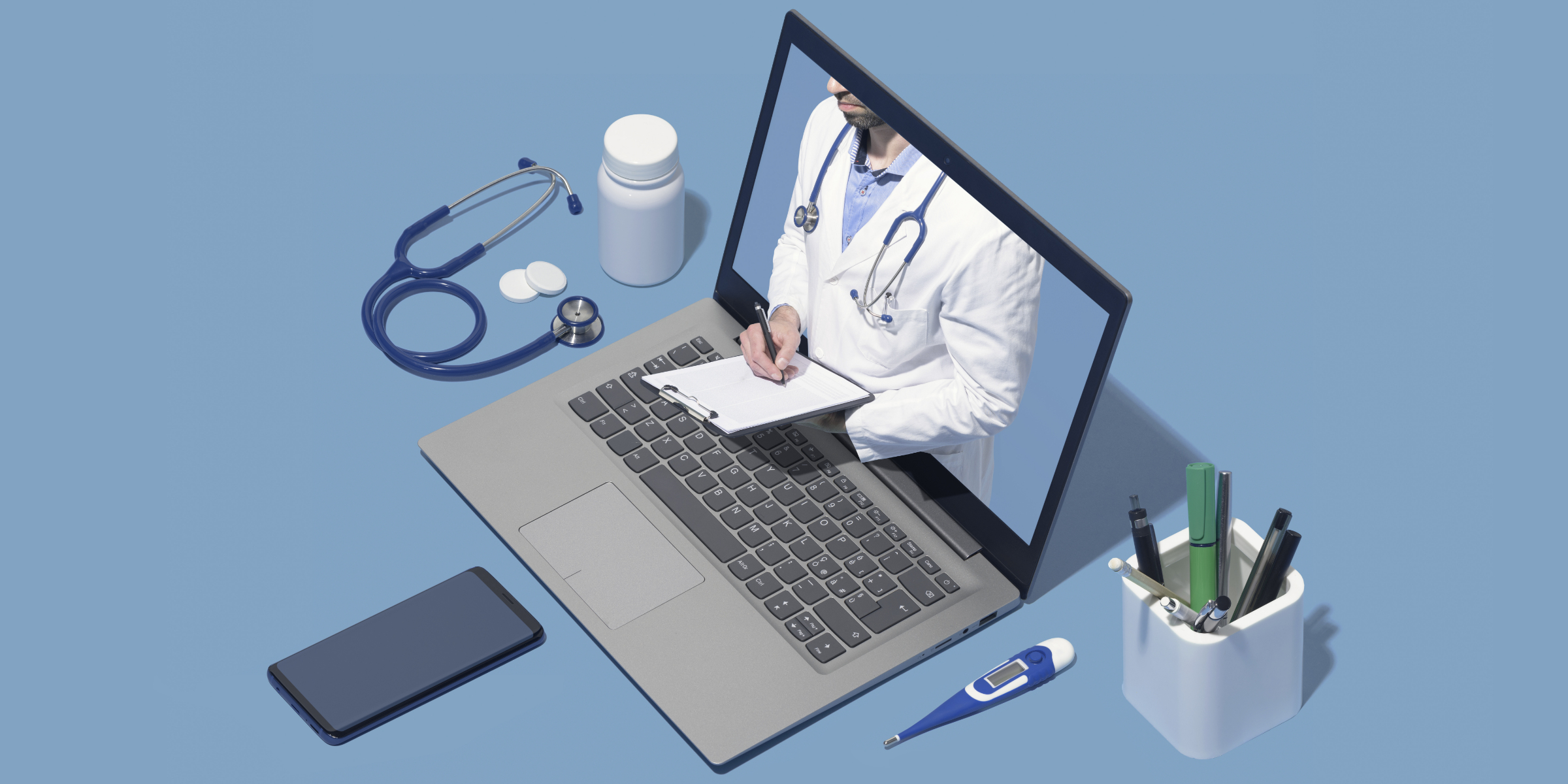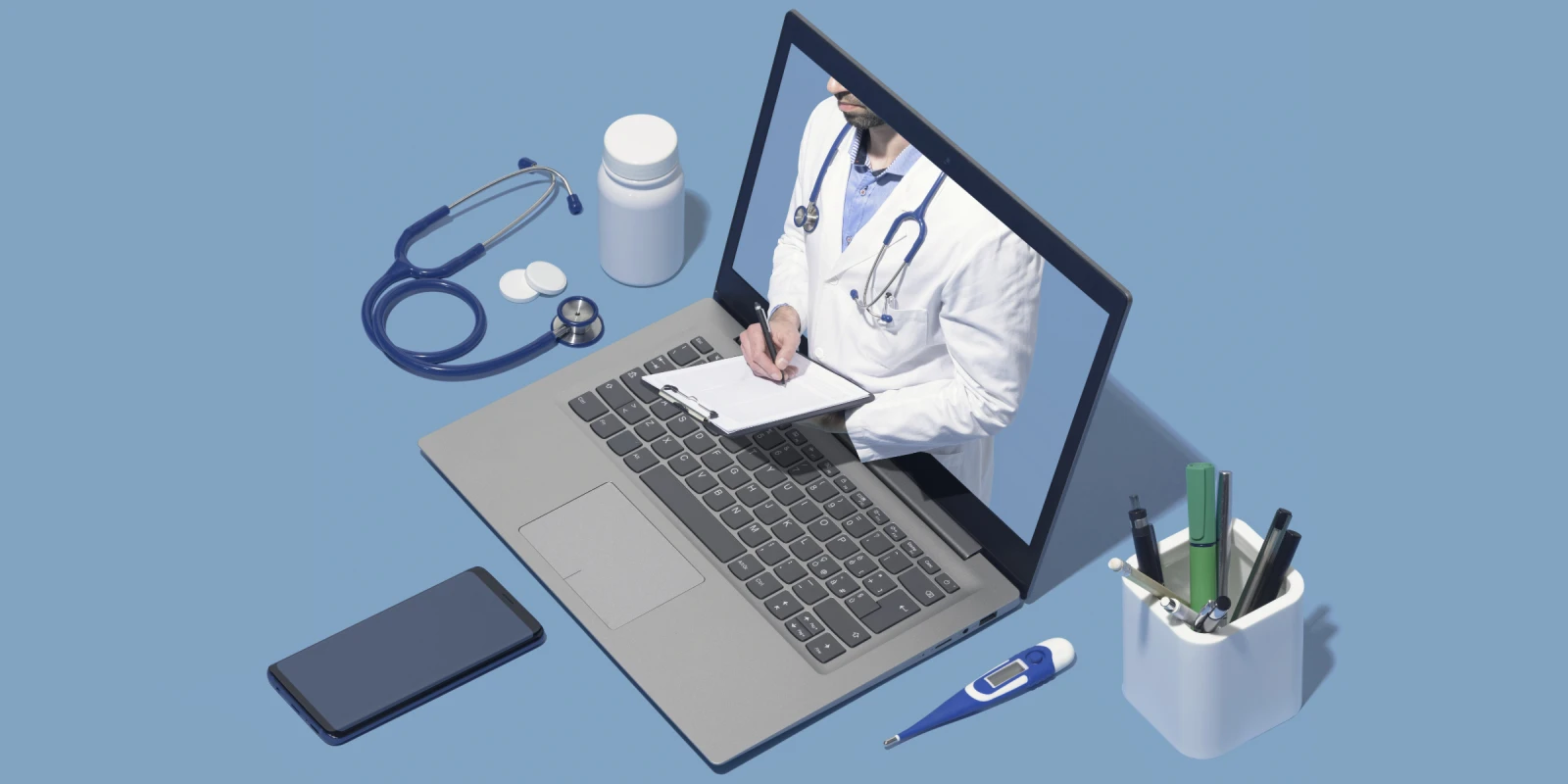
One of the ripple effects of the COVID-19 outbreak has been the rapid ascent of telehealth. Both patients and doctors, once skeptical of the technology, were left with few alternatives as stay-at-home orders, physical distancing, and fears about disease spread limited in-person office visits. Further bolstering adoption was the widespread relaxation of restrictive rules that previously made virtual visits unattractive to many practitioners. Almost over night, existing telehealth companies garnered massive interest from investors, a slew of new companies appeared, and existing digital medicine companies pivoted to provide their own telehealth solution. Experts have proclaimed the viral pandemic telehealth’s seminal moment and coming of age. Despite this enthusiasm, many physicians remain skeptical of this pronouncement. So is telehealth overhyped or underappreciated? Are doctors right to question the value of digital health or in danger of once again failing to lead change?
From a young age, I have been fascinated by technology. I distinctly remember my father bringing a computer home from work when I was no more than 5 or 6 years old. The piece of equipment was a large, heavy, gray rectangle with a tiny box for a screen — an unholy cross between an oscilloscope and HAL9000. A year or two later, we acquired our first home computer, an Apple IIc with its tension headache-inducing green monochrome screen, screeching 5.25” floppy drive, and 7.5 lb. “portability.” For all its shortcomings, the IIc made technology accessible to the masses. I was hooked.
Years later, I become one of the early adopters of the iPhone — and very much the subject of ridicule from friends and family who failed to see the device’s appeal. To be fair, the early version of the iPhone was more of a beta product, hampered by lack of an app store, frustratingly slow data speeds, and severely limited functionality compared to today’s models. But as products grew and evolved, the technology improved, and perception shifted, smartphones became not only accepted but integral to the daily lives of most people. Has telehealth similarly transitioned from early adopters to early majority or will it join the Apple IIc at the bottom of the innovation chasm?
When the pandemic hit, both doctors and patients sought a way to maintain contact and continue clinical care while reducing the risk of disease transmission and complying with physical distancing recommendations. The idea of remote or virtual visits is not new. However, several barriers limited its widespread adoption including lack of reimbursement, concerns over liability, and a sense that lack of direct contact equated to inferior care. COVID-19 left little choice. Telehealth, as many patients and doctors view it, means a video chat office visit (in essence, FaceTime with your doctor). However, prior to this newfound interest, telehealth was a far broader term applied to multiple facets of digital medicine. Video conferencing is just a subset of services within the larger scope of telehealth that includes remote patient monitoring, education, symptom tracking, AI/ML-supported decision making, and other aspects of health care technology often referred to as “digital health.”
Digital health was a burgeoning field of medicine prior to the viral outbreak with billions of investment dollars flowing in to med tech startups. Big tech companies like Apple, Google, Microsoft, and Amazon were increasing their interest in health care. While many areas have seen or are expected to see reduction in venture capital and funding interest due to economic uncertainty, health care technology remains the darling of the investment world. Much of that interest has been centered around the impact COVID-19 has had on the ability to deliver care and how digital solutions might address concerns about access, safety, convenience, and value. By the same token, digital health skepticism from physicians remains a barrier to adoption (though that barrier may have been lowered). Data on patients' willingness to embrace technology as part of their medical care is also mixed. And while health care technology holds much promise, a few high profile applications, including Google’s AI-powered retinopathy screening tool and the Apple Watch Heart study, have failed to impress. More evidence of success and impact is needed for the hype of health tech to match the hope that it can usher in a new, better era of medicine.
As for the narrower application of telemedicine (video chat-based office visits), the risk of a bubble certainly exists. When medical offices and hospitals begin to re-open to in-person visits, the appetite for virtual visits may wane. The ability to physically examine a patient remains an important part of the evaluation process that can only be performed in the office (though several companies are working to address this problem as well, through AI-powered remote eye exams, smart activity trackers, and robots that can perform ENT evaluations). State governments and many insurance companies reversed prior policies or implemented new ones that supported reimbursement and access to telemedicine visits by relaxing regulations and bringing reimbursement in line with traditional office visits. There is no guarantee these shifts will persist going forward. Liability concerns remain as do concerns as to who telemedicine can be incorporated in to typical work flows. If barriers to telemedicine return to pre-COVID levels, so might adoption rates.
As a tech enthusiast and practicing MD, I’m overall bullish on digital health. Health care has long lagged behind other industries in its ability to leverage technology to improve safety and efficiency, reduce cost, and improve outcomes. Much of this may be due to the complexities of medicine, not only the clinical aspects but also regulatory issues, economic issues, and (perhaps toughest of all) privacy concerns. But some of the slow adoption is almost certainly due to resistance to change, traditionalism, and skepticism on the part of doctors. Physicians have long been fighting to maintain stewardship of the medical system, and it would be unfortunate to have a health care technology revolution happen in spite of our participation. Getting involved now will help us steer efforts and resources where they are needed most by working with health tech companies to shape the future of care delivery. One need not be able to write code or build a computer from scratch to contribute. The pandemic will continue to push digital health from the early adopter phase to the early majority phase. The potential is immense, as is our opportunity to help lead the way.
Dr. Benjamin Schwartz is a fellowship-trained joint replacement surgeon practicing on the North Shore of Massachusetts. He enjoys working out, taking road trips with his family, and cooking. He serves on the Editorial Board of the Journal of Arthroplasty and is a member of the AAHKS Practice Management Committee. Dr. Schwartz is a 2019-2020 Doximity Fellow.
Click here to see more perspectives on COVID-19 from the Doximity network.
Click here for up-to-date news about COVID-19 on Doximity.







